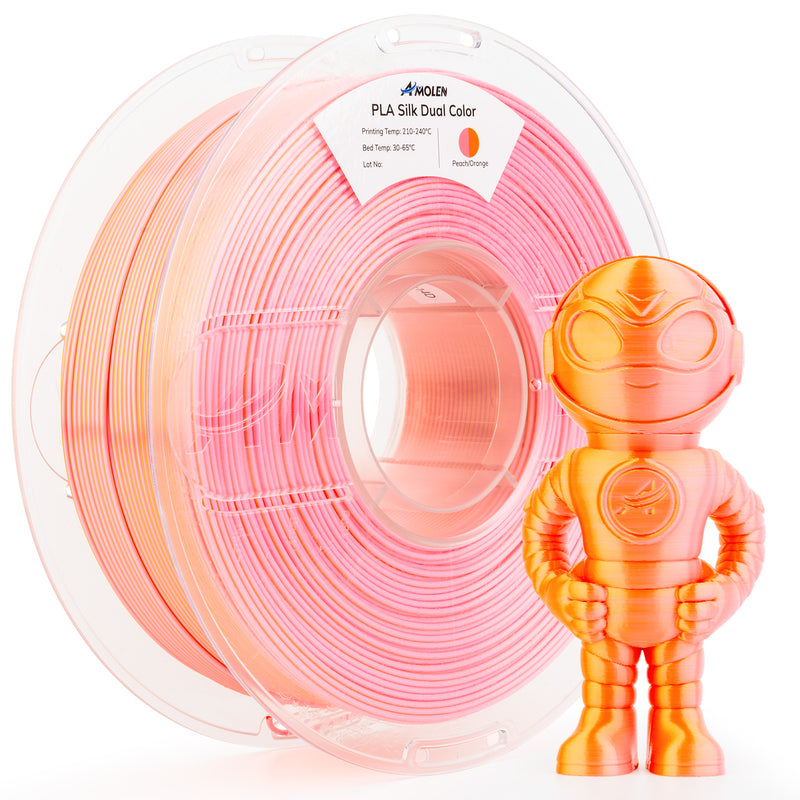Unlock the Secrets to Choosing the Perfect 3D Printing Filament!
Choosing the right filament for 3D printing is crucial for achieving high-quality prints. The type of filament you select can significantly impact not only the appearance of your final product but also its strength and durability. Each filament material has its unique properties, making it suitable for specific applications. For instance, if you’re looking to create intricate designs, a more flexible filament may be necessary, whereas a robust material would be ideal for functional parts. This article serves as a comprehensive guide to help you explore the various types of 3D printing filaments available in the market and understand their characteristics, ensuring you make an informed choice for your next project.

Understanding 3D Printing Filaments
3D printing filament is the plastic material used in the additive manufacturing process to create three-dimensional objects. The filament is heated in the printer and extruded through a nozzle, where it cools and solidifies to form layers. There are several materials available for 3D printing filaments, each offering distinct properties that cater to different printing needs. Common materials include PLA, ABS, PETG, and TPU, each with its own melting temperature, strength, flexibility, and ease of use. Understanding these materials is essential for selecting the right filament that aligns with your specific project requirements.
Types of 3D Printing Filaments
Among the most common 3D printing filaments, PLA (Polylactic Acid) is known for its ease of use and eco-friendliness, making it a popular choice for beginners. It prints at lower temperatures and is less prone to warping, but it may not be suitable for high-temperature applications. ABS (Acrylonitrile Butadiene Styrene) is favored for its strength and durability, ideal for functional prototypes, but it can emit fumes and requires a heated bed to minimize warping. PETG (Polyethylene Terephthalate Glycol) strikes a balance between ease of use and strength, making it suitable for a variety of applications, while TPU (Thermoplastic Polyurethane) is a flexible filament that allows for the creation of bendable parts, perfect for items requiring elasticity. Each filament type has its unique advantages, making it essential to choose based on the specific needs of your project.
Comparative Analysis of Filament Types
When comparing filament types, several factors come into play. PLA is generally the easiest to print with, making it ideal for beginners, while ABS offers superior strength but can be trickier to work with due to warping. PETG combines the best of both worlds, providing good strength and ease of use, whereas TPU, while flexible, may require more careful handling during the printing process. Evaluating these factors helps in selecting the filament that aligns with your project goals, whether that is ease of use, strength, or flexibility.
Factors to Consider When Choosing Filament
When selecting the appropriate filament, several key considerations should be taken into account. Firstly, ensure that the filament is compatible with your 3D printer, as not all printers can handle all types of filament. Secondly, think about the intended use of the printed object; for instance, if you are creating a decorative piece, aesthetics might be your priority, while a functional part may require a stronger material. Lastly, consider cost-effectiveness; while some filaments come with higher price tags, they may offer superior performance and durability, making them worthwhile investments in the long run. Balancing these factors will guide you toward making the best choice for your 3D printing needs.
Common Filament Issues and Solutions
Filament printing is not without its challenges. Common issues include warping, which often occurs with materials like ABS, and stringing, where thin strands of plastic ooze between parts during printing. To mitigate warping, ensure your printer has a heated bed and consider using an enclosure to maintain stable temperatures. For stringing, adjusting the retraction settings on your printer can significantly reduce this problem. Troubleshooting these common filament issues can lead to smoother printing experiences and better-quality outputs.
Choosing the Right Filament for Success
In conclusion, selecting the right filament for your 3D printing projects is paramount for achieving the desired outcomes. Each type of filament offers unique characteristics that cater to specific needs, whether it be strength, flexibility, or ease of use. By understanding the various filament options, their properties, and the common issues that may arise, you empower yourself to make informed decisions that enhance your 3D printing experience. Don’t hesitate to experiment with different types of filaments to discover what works best for your projects. Happy printing!








